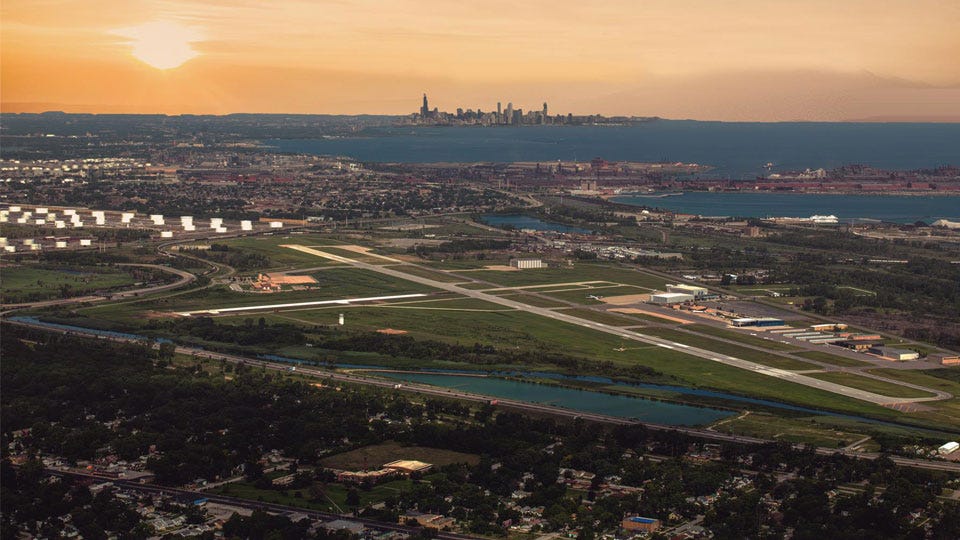Gary/Chicago Airport plans to expand fueling capacity
Subscriber Benefit
As a subscriber you can listen to articles at work, in the car, or while you work out. Subscribe Now
Gary/Chicago International Airport is hoping to expand its fuel distribution operations with funding from Gov. Eric Holcomb’s proposed $43 billion budget. The airport says its proposed $9.8 million in infrastructure funding would enable continued growth of its cargo services and general aviation offerings through increased fueling capacity. The airport, which currently has its fuel trucked-in, says it plans to invest in additional fuel tanks and hydrant stations.
In an interview with Inside INdiana Business, Executive Director Dan Vicari says the funding would allow it to pursue pipeline networking opportunities that would give the airport a major competitive advantage.
“We have a fuel distribution system today, its just setup in a way where all of our fuel needs to be trucked in,” said Vicari. “When you have the fuel trucked in, its in smaller batches, and once its in the truck, its yours and at that price. Whereas, if you are connected to the pipeline network nationally, that allows you to have a couple things. One is now you have, more or less, unlimited capacity for fuel. The second thing, that is arguably more important, is that you have the ability for your users to basically hedge fuel – get into the hedge contracts.”
Vicari says the airport is “doing okay” in terms of keeping up with the current refueling demands, but the upgraded fueling infrastructure would allow its customers the opportunity to maxamize their ability to get fuel cheaper with their fuel contracts.
“We do have a charge of $0.18 per gallon,” said Vicari. “So, our goal is to make sure people fill as much fuel as possible at our airport.”
Vicari says the airport is also undergoing a fuel masterplan to help better accommodate the growing needs of its two fixed-base operators.
“We have two FBOs,” Vicari says. “One of them has been at our airport for quite a number of years, and the other one close to a decade. As they grow, they’re running out of space.”
Vicari says a major part of its plan includes installation of a hydrant system, which would serve to refuel aircraft from underground stations instead of via trucks.
“At some of the larger airports, you’ll see that there’s actually a hydrant system for the fuel in the pavement,” says Vicari. “They can just hook up a hose and connect it directly to the airplane rather than a truck having to pull up next to the airplane and fill it with a truck.”
And Vicari says the improvements are impressing its customers.
“We are having conversations with cargo operators and commercial passenger airlines and they have read the news as well and are very excited,” he said. “Its a big, positive attribute for them to know that the airport has piped-in fuel rather than trucked-in.”
Ultimately, Vicari says the airport will attempt to tap into national fueling networks, including a Citgo fuel farm and a BP pipeline, both of which are located just across the street from the airport.
Holcomb’s $43 billion budget is awaiting approval from the General Assembly. Funding authorization is expected this spring.
“We’ve got some work to do yet, to work closely with legislators, to ensure it stays in the budget,” said Vicari.
